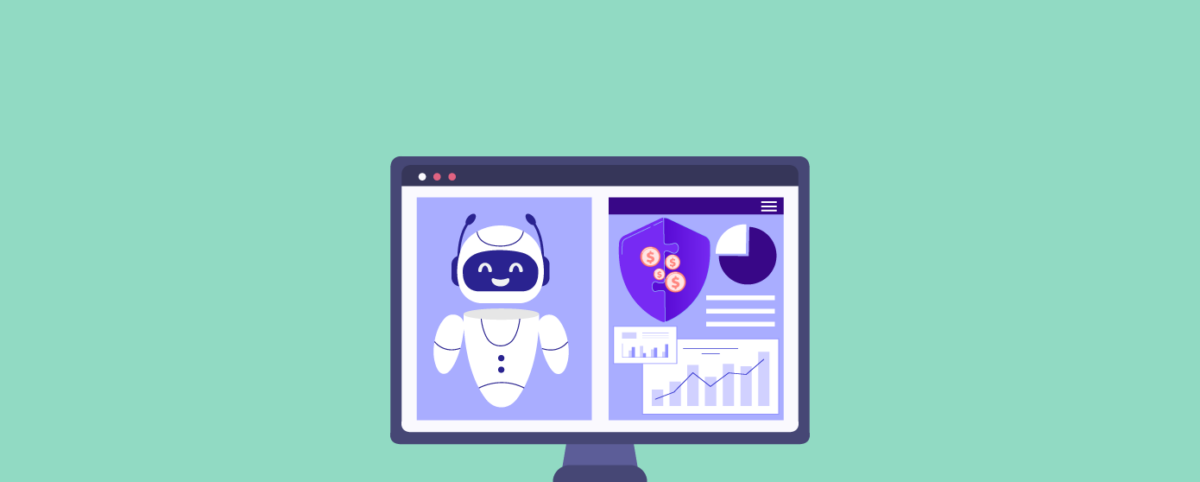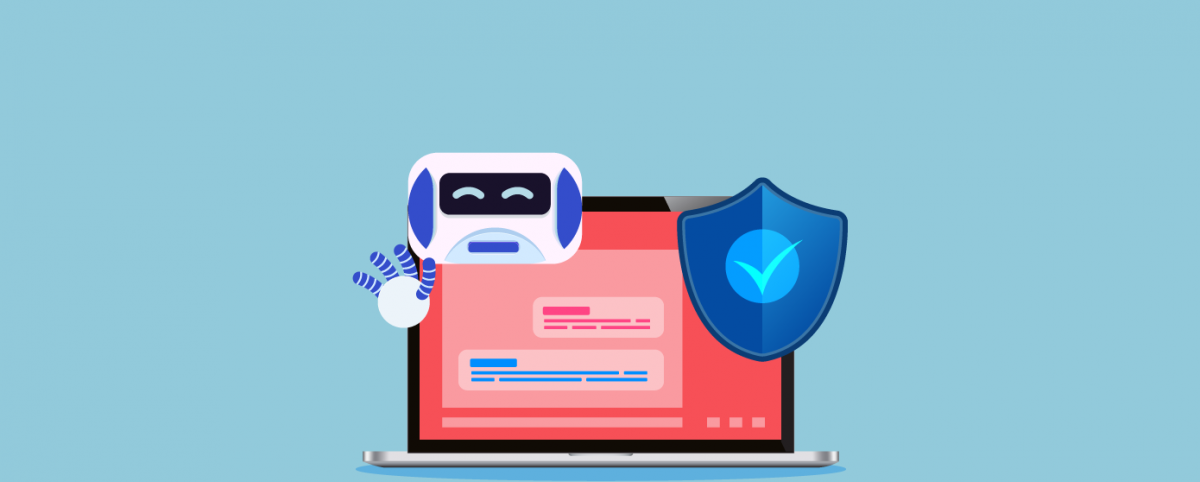How Managed Bot Protection Shields SaaS Businesses
In the first half of 2025 alone, AppTrana blocked over 64 million bot attacks across industries, a number that highlights how automated abuse has become a daily battle for digital businesses. With 30,000+ SaaS providers powering the workflows of 14 billion users worldwide, SaaS sits at the core of digital transformation, making it a prime target for credential stuffing, account takeover, API abuse, and other bot-driven exploits. Managed bot protection for SaaS is, therefore, mission-critical for the SaaS providers.
The Challenges of Bot Traffic in SaaS
Here are the critical reasons why SaaS businesses cannot afford to depend on generic, one-size-fits-all bot mitigation tools:
1. Always-On Exposure
By design, SaaS applications are public-facing and continuously available. This makes them an always-open target for attackers using automated bots. Even when most of your customers are offline, bots can hammer your login forms, APIs, or checkout flows, probing for weaknesses. Without constant monitoring and adaptive defenses, the risk of successful exploitation rises dramatically.
2. Account-Driven Risks
Most SaaS platforms rely heavily on user accounts whether for subscriptions, collaboration, or storage. This makes them prime targets for credential stuffing, brute-force login attempts, and account takeover attacks. Once bots gain access, attackers can steal sensitive data, disrupt services, or commit fraud. For SaaS providers, this translates to financial loss, compliance risks, and worst of all, erosion of customer trust.
3. API-First Architecture
Modern SaaS products are built around APIs to enable integrations, mobile apps, and partner ecosystems. While APIs are vital for growth, they are also attractive entry points for bot attacks. Bots can exploit weak authentication, scrape sensitive data, or abuse rate limits. Since APIs often bypass traditional bot defenses, SaaS companies need protection that extends beyond the web layer and inspects API traffic with equal depth.
4. User Experience Sensitivity
Unlike some industries where a slight delay might go unnoticed, SaaS thrives on seamless, uninterrupted user experience with minimal latency. Customers expect fast login, smooth workflows, and instant access to data. If false positives block legitimate users or if DDoS-style bot floods slow performance, users are quick to churn and move to competitors. That means SaaS businesses must strike a delicate balance strong defenses that stop malicious bots without ever inconveniencing genuine customers.
Core Features of Managed Bot Protection for SaaS Platforms
For SaaS, managed bot protection goes beyond identifying malicious traffic and protects accounts, APIs, and workflows without harming the seamless user experience customers expect.
Below are the essential features that make managed bot protection a necessity for SaaS businesses:
Behavioral-Based Anomaly Detection
Bots are increasingly sophisticated, often bypassing signature-based defenses by mimicking human behavior. Behavioral analysis is a critical feature of modern bot protection, where systems examine traffic patterns in context, considering request frequency, timing, sequence, and other behavioral indicators to detect anomalies. In practice, this approach allows SaaS platforms to detect new and previously unseen bot behaviors dynamically.
AppTrana maanged bot protection integrates AI-driven behavioral models that continuously generate and update behavioral signatures, enabling SaaS platforms to maintain high detection accuracy while minimizing disruption to genuine users.
AppTrana’s AI model analyzes over 30 behavioral and identity-related characteristics of every request, continuously classifying entities and updating risk scores in real time. This dynamic profiling enables detection of advanced, evasive bots that bypass traditional defenses.
Behavioral detection can include SaaS-centric metrics like account activity per subscription, cross-tenant access attempts, and usage anomalies in tiered plans.
Workflow-Based Bot Protection for SaaS Applications
Bots rarely act randomly; they target high-value processes. In a SaaS platform, this could mean automated ticket purchases, account creation abuse, or exploitation of API calls. A bot may appear harmless when observed in isolation but can create significant operational overhead when interacting with a specific workflow.
AppTrana fully managed bot module addresses this challenge where the Indusface SOC team works with SaaS firms to create custom workflow-based bot policies. For example, the platform can monitor a checkout sequence for deviations from expected steps. Bots attempting to bypass the normal flow can be automatically flagged and mitigated, while legitimate users proceed seamlessly. This workflow-centric strategy ensures that protection aligns directly with business logic, minimizing friction and preserving customer trust.
Workflow monitoring can extend to API rate-limiting per user, tenant-specific behavior analysis, and protection of SaaS admin endpoints, which are prime targets for automation attacks.
Risk and Anomaly-Based Bot Detection
Advanced bot protection begins with accurate detection. Each incoming request is analyzed across multiple dimensions such as IP reputation, device fingerprinting, behavioral signals, and interaction context to generate a dynamic risk score. This score reflects the probability of the request being automated. SaaS providers can use this scoring to differentiate between legitimate high-volume usage and malicious activity.
For multi-tenant SaaS, risk scoring can be contextualized per tenant, ensuring one customer’s heavy usage does not get mistaken for a bot attack against another. With AppTrana’s managed bot mitigation, teams can even define custom scoring models and thresholds, applying the right level of mitigation such as CAPTCHAs, crypto challenges, or outright blocking only when risk crosses an acceptable limit.
Granular Mitigation Techniques Customized to Risk Score
Effective bot protection goes beyond simple blocking. Not all bots have the same intent some may attempt credential stuffing, others scrape content, and some may exploit inventory or pricing systems. Granular mitigation allows SaaS teams to respond appropriately to each type of bot activity.
Common mitigation strategies include throttling request rates, serving decoy data to waste bot resources, or presenting verification challenges to medium-risk traffic. AppTrana further refines this approach with risk-based response tiers, including targeted crypto challenges and fake-data feeds that confuse attackers while protecting the application and user experience. This ensures that mitigation is intelligent, adaptive, and aligned with the actual threat.
Visibility and Insights
Understanding bot activity is critical for proactive bot management. A centralized dashboard reports on bot traffic volumes, attack types, geographic sources, and mitigation effectiveness enables SaaS teams to make informed decisions. By tracking metrics like false positives, response times, and traffic patterns, platforms can fine-tune detection rules and demonstrate accountability to stakeholders.
AppTrana integrates visibility with mitigation and provides dashboards that show attack trends, and workflow-specific activity. These help SOC teams monitor threats in real time and adjust policies without constant manual intervention.
AppTrana further provides visibility into top IPs and countries responsible for bot attacks and zero in on the origin of attacks. This intelligence helps prioritize mitigation efforts and understand regional risk patterns.
Managed Service and Expert Oversight
Even with AI and automated detection, bots continue to evolve. Human expertise remains essential for analyzing new attack patterns, fine-tuning mitigation policies, and ensuring the system adapts to changing behaviors. Managed services provide this layer of oversight, relieving internal SaaS teams from the burden of continuous monitoring.
AppTrana offers a managed SOC-driven approach, where security experts oversee every protected application. They investigate suspicious activity, adjust detection modes, and ensure minimal false positives, allowing SaaS teams to focus on core business operations while maintaining confidence in the platform’s security posture.
Integration with DDoS Protection
Bots are often used to orchestrate large-scale DDoS attacks that can overwhelm SaaS infrastructure. Integrating bot protection with DDoS mitigation ensures that platforms can differentiate between legitimate traffic, automated crawlers, and malicious requests. This approach helps maintain uptime, performance, and reliability during high-volume attacks.
Solutions like AppTrana WAAP combine WAF, API Security, bot and DDoS protection in a unified service, giving SaaS platforms resilient defenses without sacrificing user experience.
DDoS protection can be tuned per region, per tenant, or per API endpoint to minimize disruption for global SaaS users while mitigating bot-driven volumetric attacks.
Bot Intelligence Feeds
Proactive bot protection requires staying ahead of evolving threats. Bot intelligence feeds provide real-time information on emerging bot signatures, attack vectors, and global activity trends, enabling SaaS teams to block attacks before they affect users.
AppTrana combines global attack telemetry with SaaS-specific behavioral insights, continuously updating risk scores, workflow rules, and mitigation strategies. It also offers detailed analytics on targeted IPs, URIs, and policies, helping teams proactively mitigate attacks while keeping defenses aligned with business logic.
Compliance Reporting
For SaaS platforms, bot attacks are not only operational risks, they can also create compliance and regulatory exposure. Managed bot protection provides detailed, audit-ready logs of bot activity, mitigation actions, and response timelines. These reports demonstrate adherence to industry standards such as SOC 2, ISO 27001, GDPR, and other data protection regulations relevant to SaaS operations.
These logs can include information such as:
- Detected bot type and behavior
- Risk scores assigned to traffic
- Mitigation measures applied (e.g., throttling, CAPTCHA, fake-data feeds)
- Workflow or API endpoints affected
- Real-time alerts and response timelines
For SaaS teams, this ensures accountability, simplifies audits, and provides documented evidence that automated systems and human oversight are actively protecting customer data.
With its centralized dashboard, AppTrana enables SaaS teams to filter logs by tenant, workflow, or API endpoint. This multi-dimensional visibility enables targeted audit ready reporting, reduces audit preparation time, and ensures that evidence of bot mitigation is actionable and easy to present to stakeholders or regulatory auditors.
Due Diligence Checks Before Choosing a Managed Bot Protection for SaaS Solution
Selecting the right bot protection solution goes beyond feature comparison. It requires a careful evaluation of pricing models, detection accuracy, and the vendor’s operational reliability. Here are key due diligence checks every SaaS provider should perform before finalizing a bot mitigation partner:
1. Verify Behavioral Bot Mitigation and Billing Terms
In the bot mitigation market, behavioral bot detection is often offered as an add-on rather than a default capability. Some vendors also apply additional billing based on requests per minute (RPM) or similar usage thresholds. Always confirm whether your quote includes behavioral DDoS protection and check for any variable billing parameters that could inflate costs as your platform scales.
2. Assess False Positive Management and SOC Oversight
Even the most advanced AI-driven bot defenses can occasionally flag legitimate users. To maintain business continuity, it is critical that the vendor’s SOC team actively monitors false positives and fine-tunes policies. During evaluation, review the vendor’s workflow for handling false positives and request metrics that demonstrate historical accuracy. Business continuity should never be compromised by false detection.
3. Review SLAs for Workflow-Based Bot Policies
When adopting workflow-based bot protection, ensure that Service Level Agreements (SLAs) clearly define response times, tuning frequency, and mitigation accuracy. These SLAs should be part of the contract, not optional add-ons, to guarantee consistent performance and accountability.
4. Confirm What is Included in the Quote
While many platforms advertise “integrated bot protection,” the default setup often covers only basic signature-based detection and may even be set to logging mode by default. Before finalizing a vendor, review the exact capabilities included in your quote and clarify whether advanced features like behavioral analysis, risk scoring, and managed oversight are active from day one.
5. Assess Global Threat Intelligence and Update Frequency
Attack techniques evolve quickly, and your protection needs to evolve faster. Evaluate whether the vendor’s solution leverages global bot intelligence feeds and how frequently behavioral signatures or detection models are updated. A solution backed by continuous intelligence sharing and global telemetry ensures faster adaptation to emerging bot tactics.
6. Confirm Multi-Tenant Visibility and Custom Policy Controls
For SaaS platforms serving multiple tenants, visibility and control per tenant are critical. Check whether the solution supports tenant-specific dashboards, risk scoring, and custom policy enforcement. This ensures one customer’s heavy traffic does not trigger false positives or mitigation for others.
Stay Ahead of Bots
Bots threaten SaaS operations, customer trust, and compliance. AppTrana’s Managed Bot Protection stops automated attacks with AI-driven detection, granular mitigation, and audit-ready reporting, keeping your workflows safe and seamless.
Start your free trial today and protect your SaaS platform from bots.
Stay tuned for more relevant and interesting security articles. Follow Indusface on Facebook, Twitter, and LinkedIn.

 October 6, 2025
October 6, 2025






